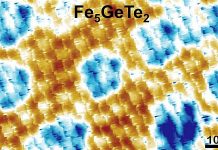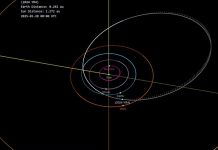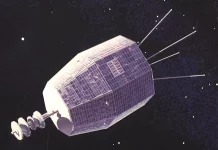
At Rice University, physicists have stumbled upon an exciting discovery that might make things like quantum computers even more powerful in the future.
The lead scientist, Qimiao Si, and his team found out that some specific materials can blend two different types of quantum behaviors.
This blending could make it easier to control how information is stored and processed in quantum devices.
What’s This About “Lattices” and “Electrons”?
Alright, imagine a big net made of strings – that’s a “lattice.” In certain materials, electrons (tiny particles that whizz around atoms) can get stuck in this net.
This is because of the pattern or arrangement of the net, which physicists call a “frustrated lattice arrangement.”
Si and his colleague Haoyu Hu found out that when electrons get stuck in these nets, they behave differently.
Instead of just belonging to one atom, they can belong to several. And, more importantly, they can mix and mingle with other electrons.
So, What’s New Here?
Si explained that there are two types of highways where electrons move: the d-electron highway and the f-electron dirt road.
The d-electron highway is like a fast multi-lane freeway, while the f-electron dirt road is a slower and rougher path.
Typically, in the world of quantum physics, f-electron systems (the dirt road ones) show some really unique behaviors. But there’s a catch. To see and use these behaviors, scientists usually need super cold temperatures, like 10 Kelvin (that’s colder than anywhere naturally on Earth!).
The surprise came when Si’s team discovered that in certain materials, the fast d-electron highway can sometimes act like the slow f-electron dirt road. This means scientists can get those unique behaviors without making things super cold – maybe even at room temperature!
This discovery is like finding out your regular car can sometimes act like a race car without any modifications. It means that in the future, devices like quantum computers might work much faster and be easier to use because they don’t need to be kept super cold.
Si said, “It is effectively a dirt road, but it is much more strongly coupled, and that translates to physics at much higher temperatures.” This means scientists might be able to use their knowledge from studying slow electrons at cold temperatures (the dirt road) in situations with faster electrons at warmer temperatures (the highway).
Qimiao Si is a big deal at Rice University. He’s leading the charge in this exciting field of quantum physics and holds a prestigious title there. His discoveries, along with those of his team, are paving the way for better quantum technologies in the future.
Simply put, their work is like finding a shortcut to make our future tech devices even more amazing. Who knows what wonders this could lead to in the years to come?
Follow us on Twitter for more articles about this topic.
Source: Rice University.



